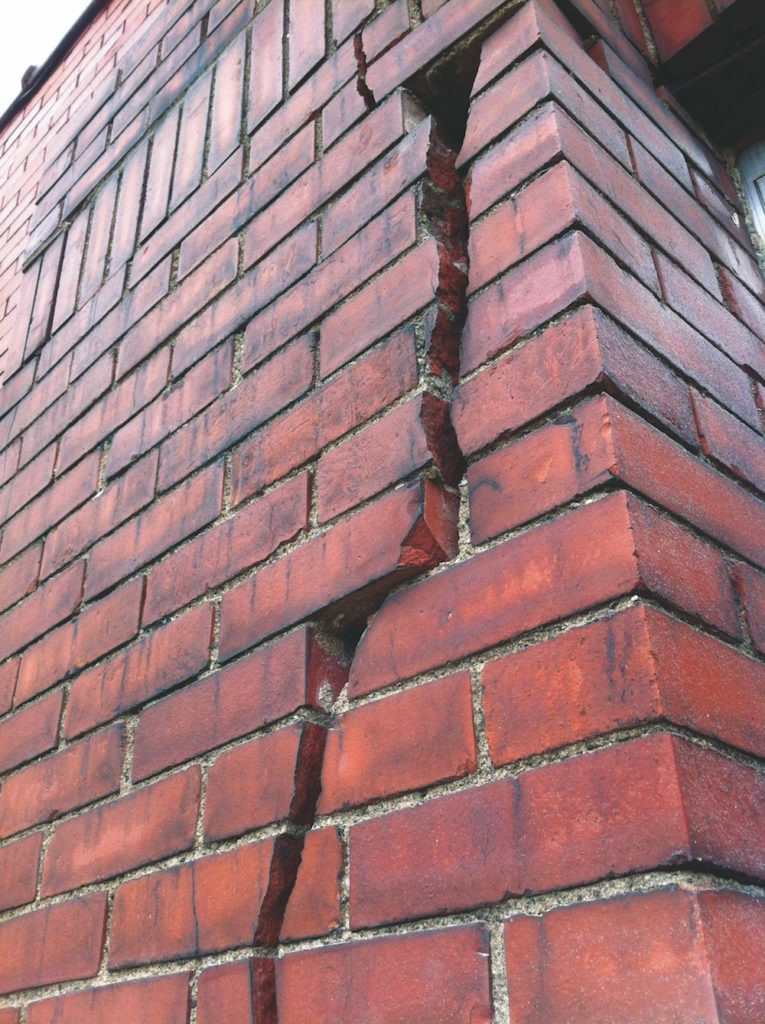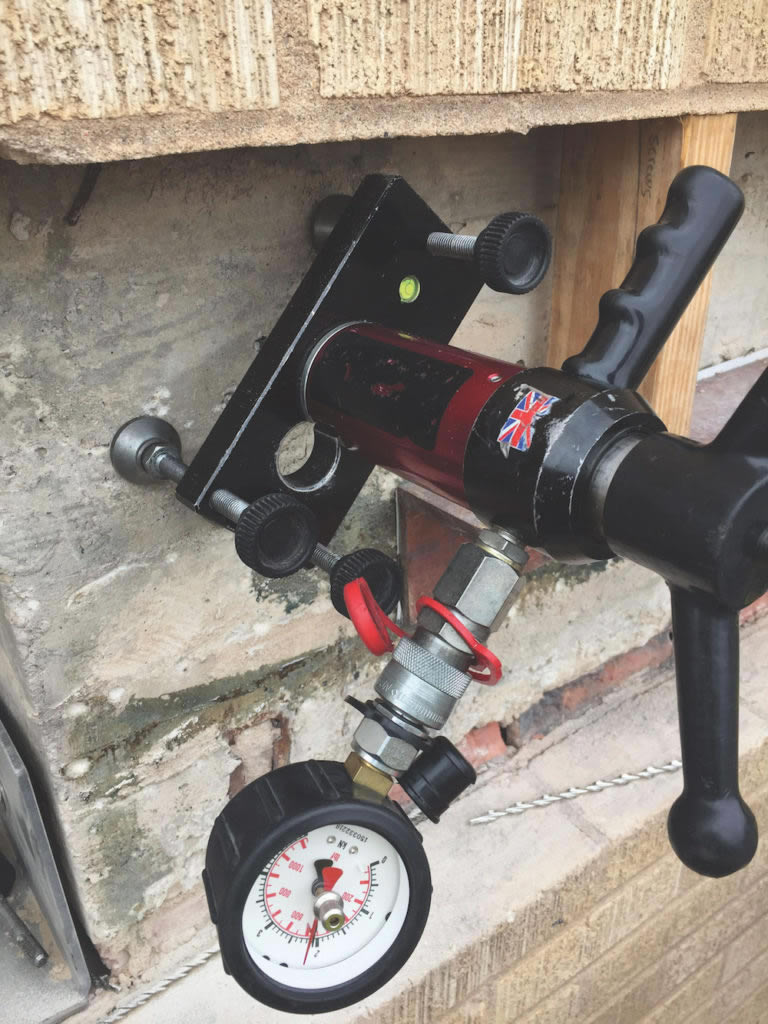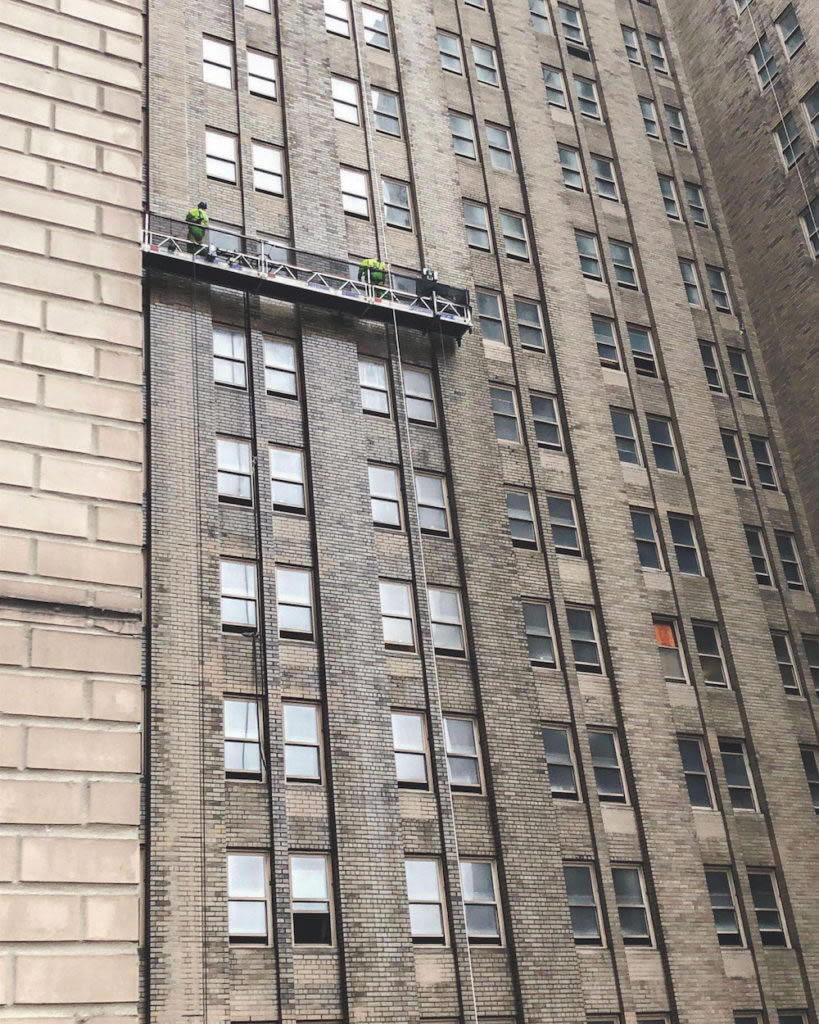You can restore and improve your bottom line when you make masonry restoration a part of your offerings.
Words: Stephen Franks
Photos: Hohmann & Barnard
As a mason contractor, you know anchors. An integral part of the masonry wall system, the proper anchor used the proper way can make or break the integrity of the wall. What you may not know is that not all anchors serve the same ultimate purpose. Restoration anchors are a different animal, and understanding the difference in their role and usage can expand your offerings as a mason contractor. You have an opportunity to increase your bottom line if you choose to take advantage of it.
Think back to 2008, when the economy faced the Great Recession. The construction industry was one of the hardest hit. Contractors in all construction trades struggled for years to recover. Some didn’t, deciding the leave the construction industry altogether. Some contractors decided that the way to survive was the pivot, reset and go where the money was – what little there was – and stay afloat.
Many mason contractors were among that group of strong contractors who chose to thrive and survive. When new construction stopped frozen in its tracks, renovations and restorations took on new life. If a mason contractor was able to provide this type of work, he was likely able to sustain his business. But this shift in focus also leads to a more robust repertoire, and when the economy picked back up, those masons with new and additional skillsets had more to offer.
When you think restorations, keep in mind that buildings continue to age in cities around the country. Many cities have historical societies comprised of people who care a great deal about preserving the past and keeping their city’s meaningful structures intact and safe from demolition and destruction. Some cities actually building these funds into their city plans or can apply for state or federal money to register a building for its historical value and restore it to greatness.
For the mason contractor, this is another opportunity. Be the name on the lips of historical society boards and committees, when they seek restoration work. Restorations can be a solid way to ensure lasting business for mason contractors.

Putting restoration to work
Restoration construction is a peculiar animal. While new construction largely works with a known commodity – drawings, specifications, products that are assembled in a logical way to construct the building – that is not so with restoration. Restorations work in reverse. We need to effectively be able to deconstruct the building in order to implement a restoration strategy that addresses inadequacies, for example, stabilization of the walls.
The expertise required and products used are not price-sensitive commodity items. Rather, they are specialized solutions that command a higher profit margin, all of which goes to the bottom line. The scope of work often increases once the project starts, due to unknown conditions that are encountered as the job progresses. Once everything is complete, the opportunity to clean the building and maintain it in future years is presented, and the potential for residual income is created.
A good example is the stabilization of an existing masonry wall. You can establish, perhaps, that an unstable condition exists by observing bulges or cracks in the masonry or, heaven forbid, the collapse of a panel. Here’s where your inner Sherlock Holmes comes into play. First, you need to do the forensics to establish and address the root cause of the problem.

There is little point in trying to cure symptoms if the disease is still ravishing the body. Tracing the cracks and examining the changes that have been made to the building over time helps build a picture of what may have caused the building’s problems that the building is exhibiting. For example, if the roof has been replaced, the dynamics of the building may have been altered, so this detail must be considered.
Once you’ve remedied the cause of the problem, you can address the solution for stabilizing the walls. The most cost-effective and least invasive method of retrofitting a wall tie to reconnect the outer wythe of the wall to the structural backup is a helical tie. Simply put, this one-piece helical masonry screw can be installed into a predrilled pilot hole, a bit like a self-tapping screw.
The installation employs the hammer action from a drill, transmitted to the tie through a special installation tool. The tool also automatically sinks the tie below the surface of the façade, such that it becomes completely invisible once a suitable patching compound is applied.

For economic reasons, helical ties should be the first option considered. But while these ties may be suitable in many cases, they are not the panacea. Sometimes, the requirement to contain a shear load, such as reconstituting a sheared header course of brick, exists. In such a case, a mechanical torque activated anchor would be more suitable.
Similarly, a thin panel stone veneer would not be of sufficient thickness to generate enough thread engagement to counter the applied live loads. Again, a mechanical anchor solution would be more appropriate. Perhaps the materials are too brittle for the successful installation of a helical tie or mechanical anchor; then a grout injection anchor solution would be necessary.

These anchor systems will tie the outer wythe of masonry back to the structure, but how should the cracks be constrained? A helical form (same as the ties) is available in a smaller diameter and in long lengths or coil form. This can be used as horizontal joint reinforcement when setting in a bed of cementitious, non-shrink grout in the routed out bed joints of the masonry. These helical bars are so effective that they can even be used to create beams in the masonry to dissipate the applied vertical loads into sound masonry on either side of a problem area.

Once the wall has been stabilized, there are chemical cleaners available to bring the masonry back to its original glory. Going forward, a permeable anti-graffiti coating or chloride blocker can be applied to maintain those good looks. Masonry is a beautiful and practical material, and the products are available to restore and maintain it, ensuring that it remains part of our heritage well into the future.
In closing, the current economy is steady, and new construction can be seen at every turn. But our economy is cyclical. When it again slows down, restoration projects will kick in, which is your opportunity to remain relevant as a mason contractor. Will you be ready?

Stephen Franks is Director of Architectural and Technical Sales for Blok-Lok Ltd., A MiTek/Hohmann & Barnard Company. For more information, contact Stephen at sfranks@blok-lok.com.
